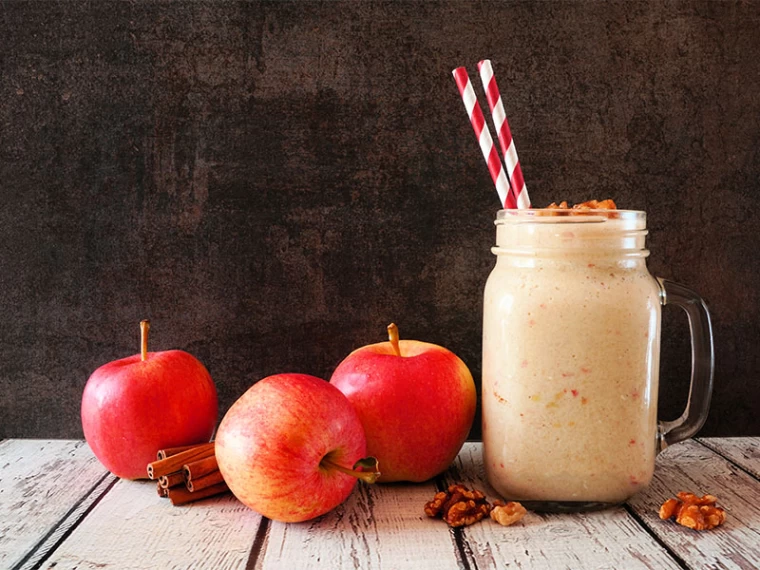Yazdi Cake is one of the most delicious and popular traditional sweets in Iran, originating from the city of Yazd. This small, aromatic cake with its soft and fluffy texture is an ideal choice for gatherings and family events. In this article, in addition to providing a brief history of Yazdi Cake, we will explain the step-by-step preparation process and key baking tips. Later, we will also discuss common baking mistakes and offer decoration and serving suggestions.
Brief History of Yazdi Cake
Yazdi Cake has been made in the historic desert city of Yazd for centuries. Since this city has always been famous for its traditional pastry shops and skilled confectioners, Yazdi Cake is recognized as one of the traditional symbols of Yazd's sweets in Iran. Its attractive appearance, soft texture, and the pleasant aroma of cardamom and rosewater have made it one of the most famous souvenirs of Yazd.
Ingredients Needed for Yazdi Cake

For a flavorful and high-quality Yazdi Cake, selecting and measuring the ingredients correctly is crucial. Below is a list of the required ingredients and their measurements:
|
Ingredient |
Specific amount |
|
Wheat flour |
2 cups (~250g) |
|
Sugar |
1 cup (~150g) |
|
Eggs |
3 |
|
Vegetable oil |
½ cup (~100ml) |
|
Yogurt |
½ cup |
|
Rosewater |
2 tablespoons |
|
Ground cardamom |
1 teaspoon |
|
Baking powder |
2 teaspoons |
|
Vanilla (optional) |
¼ teaspoon |
|
Salt |
A pinch |
Note: If desired, you can also use a small amount of brewed saffron for better aroma and color.
Step-by-Step Recipe for Yazdi Cake
Preparing the Oven and Molds
- Preheat the oven to 180°C (350°F) so it is fully warmed.
- Line muffin or cupcake molds with paper liners or lightly grease them with vegetable oil if needed.
Mixing Dry Ingredients
- Sift flour, baking powder, and salt at least once to incorporate air and make the cake texture lighter.
- Add ground cardamom and stir to combine.
Beating Eggs and Sugar
- In a separate bowl, beat eggs with sugar and vanilla (if using) for 3 to 4 minutes until the mixture triples in volume and turns pale.
Adding Yogurt, Oil, and Rosewater
- Once the eggs and sugar are fluffy, add yogurt and vegetable oil to the mixture and blend again.
- Then, add rosewater (and saffron if using) and mix for a few seconds until the mixture is well combined.
Combining Dry and Wet Ingredients
- Gradually add the flour mixture to the egg mixture, stirring gently with a spatula or wooden spoon in circular motions to maintain the batter's airiness.
Pouring Batter into Molds and Baking
- Fill each muffin mold two-thirds full with the batter.
- Place the molds on the middle rack of the preheated oven.
- Bake for 15 to 20 minutes. To check doneness, insert a toothpick into the center of a cake after 15 minutes—if it comes out clean, the cakes are ready.
Key Tips for Better Texture and Aroma
- Always sift the flour to make the cake lighter.
- Beat the eggs long enough to ensure good volume and fluffiness.
- Using freshly ground cardamom significantly enhances the final aroma of the cake.
- If your oven doesn't maintain accurate temperatures, use an oven thermometer.
- Avoid opening the oven door frequently, as this reduces temperature and prevents proper rising.
****
Common Baking Mistakes and How to Fix Them
|
Mistake |
Cause |
Solution |
|
Dense texture |
Overmixing after adding flour |
Mix only until combined |
|
Cake doesn’t rise |
Old baking powder or incorrect oven temperature |
Use fresh baking powder and precise oven settings |
|
Batter too thin or excessive cracks |
Too much yogurt or liquid in recipe |
Measure liquids precisely or add a little more flour |
|
Pale and undercooked cake |
Oven temperature too low |
Ensure oven is fully preheated before baking |
Decoration and Serving Ideas for Yazdi Cake
- Pistachio or Almond Powder: Sprinkle on top after cooling for an elegant touch.
- Whipped Cream: Pipe some cream using a nozzle for a fancier look.
- Rosewater and Saffron Syrup: Brush onto the cakes to give them a glossy, aromatic finish.
Approximate Nutritional Value of Yazdi Cake (Per Medium-Sized Cake)
|
Component |
Approximate Amount |
|
Calories |
180 – 200 kcal |
|
Carbohydrates |
25 – 30g |
|
Fat |
7 – 10g |
|
Protein |
3 – 4g |
|
Sugar |
10 – 15g |
|
Sodium |
80 – 100mg |
These values are approximate and may vary depending on the ingredients used.
Conclusion
Yazdi Cake is a wonderful choice for lovers of traditional sweets. By following these steps, you can make a soft, aromatic, and well-textured Yazdi Cake at home. Paying attention to ingredient quality, oven temperature, and proper mixing techniques significantly affects the final result. Additionally, creative decoration methods can make this beloved pastry even more visually appealing.
Frequently Asked Questions
- Can butter be used instead of vegetable oil?
Yes, but the texture will be slightly different and less moist. If using butter, melt it first and let it come to room temperature before mixing.
- Why do Yazdi Cakes sometimes crack on top?
Cracking is a normal feature of Yazdi Cake, adding to its charm. However, excessive cracking may result from high oven temperature or insufficient liquids in the batter.
- Can milk be used instead of yogurt?
Yes, but yogurt’s acidity helps with rising and moisture retention. If using milk, consider adding a little extra baking powder.
- How can I reduce the egg smell in Yazdi Cake?
Using vanilla, fresh ground cardamom, and rosewater helps mask the egg smell effectively.
- Can Yazdi Cake be baked in larger molds?
Yes, but the baking time will increase, and it may lose its traditional appearance. It’s best to use muffin or cupcake molds to retain authenticity.
By following this guide, you can successfully make a delicious Yazdi Cake at home and enjoy its wonderful aroma and taste. Bon appétit!





